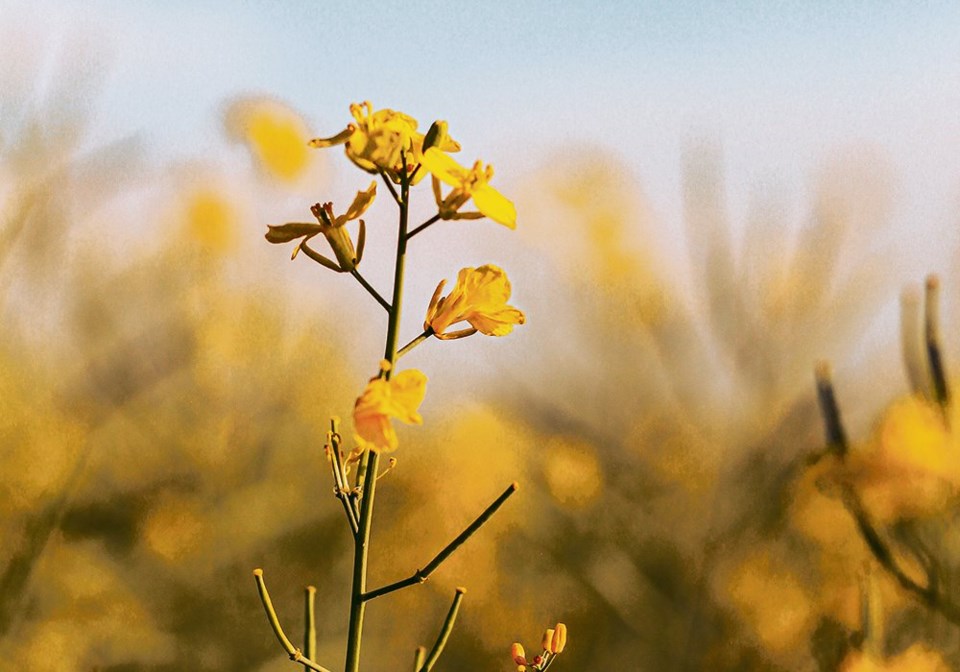There’s an old saying that goes: You can’t change the weather, but you sure can change the sails.
Corteva heard that message and decided that if they can’t prevent heat blast, they can sure insure against it.
Corteva has so much confidence in their Nexera canola that they’re willing to share the heat blast risk by insuring every acre of their canola.
If heat blast units, or HBU, in your canola field exceed 20 during your coverage period, satellite technology will detect the event and quantify the damage. Corteva will pay five dollars per acre for every HBU above 20. The maximum is 40 HBUs or $100 per acre.
It’s like crop insurance, except farmers don’t pay a premium. It comes with each bag. And there is no lengthy review process, no on-farm adjusters, yield measurements, reports or comparisons.
“And you’ll receive your payment before harvest is completed,” said Corteva’s Tyler Groneveld in a phone interview. Groneveld, a partner in the family farm at Blackie Alta., said the program is called Heat Advantage.
He said Heat Advantage is an automatic insurance policy growers get with Nexera canola. It’s available exclusively with Brevant’s Nexera. He says this kind of parametric insurance program has never been tried before in Western Canada.
Parametric insurance, also called index-based insurance, provides pre-specified payouts based upon a trigger event. In this case the trigger is extreme heat during flowering.
Global Ag Risk Solutions is a partner in the program.
“Corteva is the first company to provide growers with this kind of coverage,” Groneveld said, emphasizing that growers don’t need to opt in, fill out a form or sign an agreement. They just buy the seed and they’re in the program. If it’s a moderately successful year, the program won’t trigger.
“It’s not intended to cover your inputs. A grower typically buys crop insurance for that. The program provides some protection for the most profitable canola crop grown in Western Canada. That fact is based on three years of data from 400 data points.
“If Heat Advantage had been available in 2021, our growers would have automatically been protected and they would have received $100 per acre, plus whatever additional insurance they carried, plus they could still harvest the crop no strings attached. Heat Advantage is not yield driven. It’s only triggered by heat blast units.”
Groneveld said Global Ag Risk Solutions provides the policy and coverage and manages Heat Advantage. Global backstops its risk by underwriting with Northbridge General Insurance Corp.
Global has 42 years of canola data gathered from its two satellites, which measure heat and HBU in crops within each six-mile radius, ranging from southeast Manitoba to northern Alberta. Their model adjusts for each location, so growers get background based on their specific location. The tracking is very accurate and the digital report in customized for each grower.
Heat blast devasted canola yields across Canada in 2020, resulting in a nationwide loss of more than 50 million bushels totalling $525 million in combined revenue. Estimates by Global Ag Risk Solutions indicate that 90 percent of canola-growing townships experienced at least one full day of heat that exceeded thresholds of 29 C daytime heat and 17 C overnight heat.
What’s heat blast?
A heat blast unit measures excess heat a canola crop is exposed to while flowering. HBUs are measured by the number of degrees exceeding 29 C during the day and exceeding 17 C during the evening.
For example, Global Ag Risk Solutions determines when your field hits 525 growing degree days and your canola plants are in the critical flowering stage. At that point, the Heat Advantage program coverage period begins automatically. If daytime temperatures reach 32 C it registers as three HBUs (+3 HBU). If nighttime temperatures hit 19 C it registers as two more HBUs (+2 HBUs). That’s a daily total of five HBUs.
Payout begins once the field registers 20 HBUs during flowering.
How it works
Upon purchase of Nexera canola, before seeding, farmers will receive personalized access to the parametrics.agsite for their farm-specific heat blast coverage.
They get a unique view of their field, customized to their location and seed application dates. Farmers can view a heat blast index for their township, backed by 42 years of temperature and canola yield data analysis.
The link lets farmers view daily growing-degree-day accumulations and thresholds, projected date their coverage period will activate, number of covered acres based on units of purchased seeds and their policy status on each day. Once coverage begins, farmers can view a running tally of their accumulated heat blast units.




